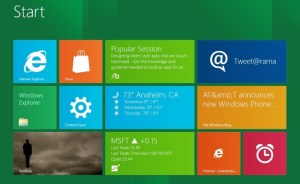As expected, Microsoft today announced that Windows 8 is now available for download for its paying MSDN and TechNet Professional subscribers. The company, however, is also making a 90-day evaluation version available to all developers (or anybody else who wants to give the Windows 8 RTM a try) without the need to pay for a subscription. There are some caveats, though: this version will expire in 90 days and you won’t be able to upgrade to a non-evaluation version.
These limitations make the evaluation version a good choice for users who want to run it in a virtual environment and just test their apps on Windows 8 before its scheduled release data of October 26. This way, Microsoft notes, “you’ll be able to upgrade from your original OS to the Windows 8 RTM when it becomes available in October.” The trial version is actually Windows 8 Enterprise, which includes all the features of Windows 8 and a few additional Enterprise-focused tools.
 With today’s release, Microsoft is also making a number of new versions of its developer tools available, as well as new sample apps and design assets.
With today’s release, Microsoft is also making a number of new versions of its developer tools available, as well as new sample apps and design assets.
For those keeping count at home, by the way, the Windows 8 Developer Preview site still happily talks about “Metro style app development,” even though rumor has it that Microsoft is now banning all apps with the word “Metro” in their name from the Windows Store.
Don’t Expect Any Major Changes
We are downloading the RTM right now and will take it for a spin soon, but the first reports indicate that there are no major changes between the RTM and the last public preview release. If you were hoping that Microsoft would give you a way to route around the Metro UI in the RTM, you will be sorely disappointed. So far, some of the most obvious changes, as ZDNet’s Ed Bott notes, are a new set of backgrounds for the start and lock screens, as well as the arrival of new apps in the Marketplace and the fact that Microsoft’s file manager is now called “File Explorer” and not “Windows Explorer.”
